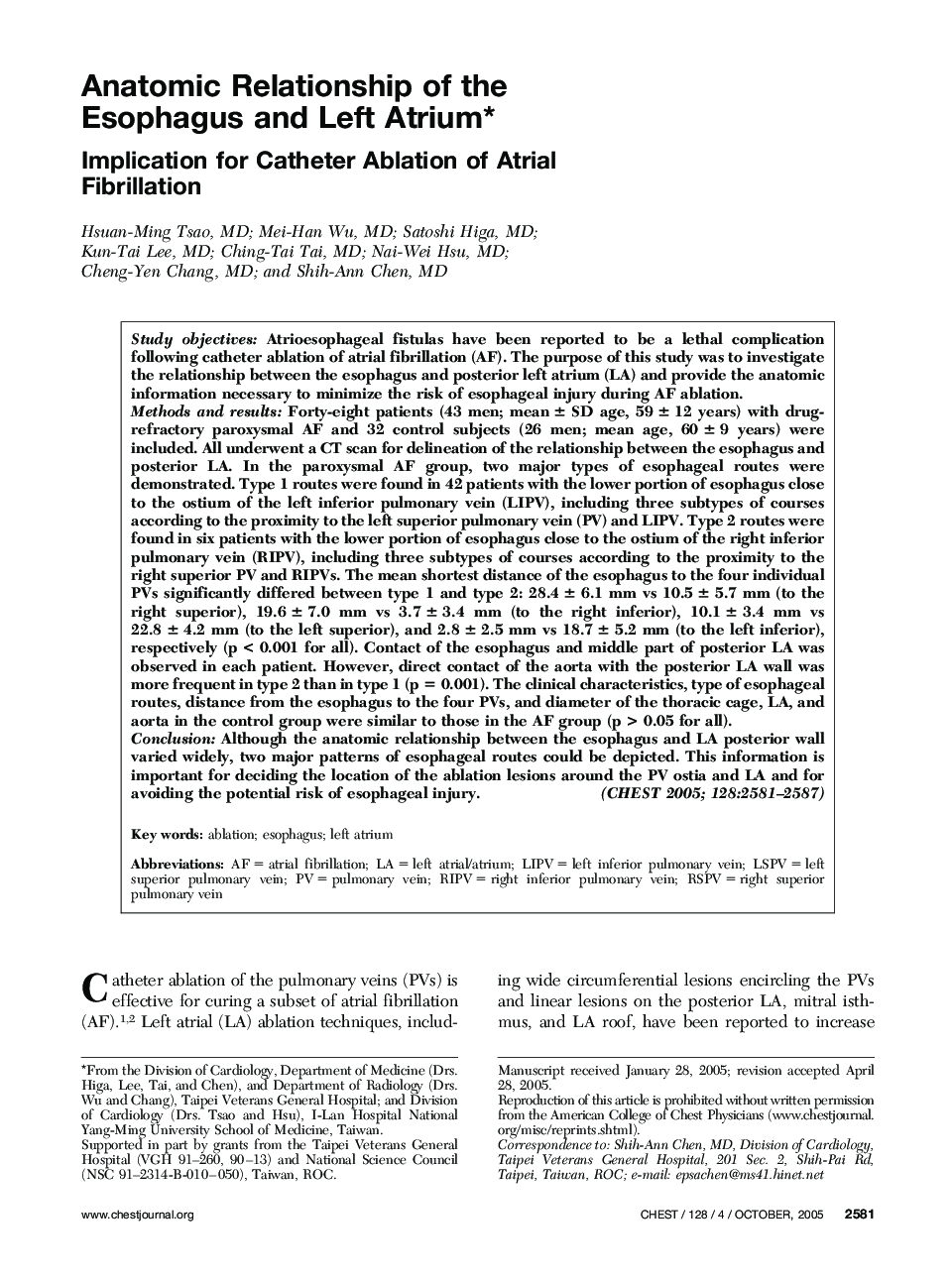| کد مقاله | کد نشریه | سال انتشار | مقاله انگلیسی | نسخه تمام متن |
|---|---|---|---|---|
| 2907153 | 1173488 | 2005 | 7 صفحه PDF | دانلود رایگان |

Study objectivesAtrioesophageal fistulas have been reported to be a lethal complication following catheter ablation of atrial fibrillation (AF). The purpose of this study was to investigate the relationship between the esophagus and posterior left atrium (LA) and provide the anatomic information necessary to minimize the risk of esophageal injury during AF ablation.Methods and resultsForty-eight patients (43 men; mean ± SD age, 59 ± 12 years) with drug-refractory paroxysmal AF and 32 control subjects (26 men; mean age, 60 ± 9 years) were included. All underwent a CT scan for delineation of the relationship between the esophagus and posterior LA. In the paroxysmal AF group, two major types of esophageal routes were demonstrated. Type 1 routes were found in 42 patients with the lower portion of esophagus close to the ostium of the left inferior pulmonary vein (LIPV), including three subtypes of courses according to the proximity to the left superior pulmonary vein (PV) and LIPV. Type 2 routes were found in six patients with the lower portion of esophagus close to the ostium of the right inferior pulmonary vein (RIPV), including three subtypes of courses according to the proximity to the right superior PV and RIPVs. The mean shortest distance of the esophagus to the four individual PVs significantly differed between type 1 and type 2: 28.4 ± 6.1 mm vs 10.5 ± 5.7 mm (to the right superior), 19.6 ± 7.0 mm vs 3.7 ± 3.4 mm (to the right inferior), 10.1 ± 3.4 mm vs 22.8 ± 4.2 mm (to the left superior), and 2.8 ± 2.5 mm vs 18.7 ± 5.2 mm (to the left inferior), respectively (p < 0.001 for all). Contact of the esophagus and middle part of posterior LA was observed in each patient. However, direct contact of the aorta with the posterior LA wall was more frequent in type 2 than in type 1 (p = 0.001). The clinical characteristics, type of esophageal routes, distance from the esophagus to the four PVs, and diameter of the thoracic cage, LA, and aorta in the control group were similar to those in the AF group (p > 0.05 for all).ConclusionAlthough the anatomic relationship between the esophagus and LA posterior wall varied widely, two major patterns of esophageal routes could be depicted. This information is important for deciding the location of the ablation lesions around the PV ostia and LA and for avoiding the potential risk of esophageal injury.
Journal: Chest - Volume 128, Issue 4, October 2005, Pages 2581–2587